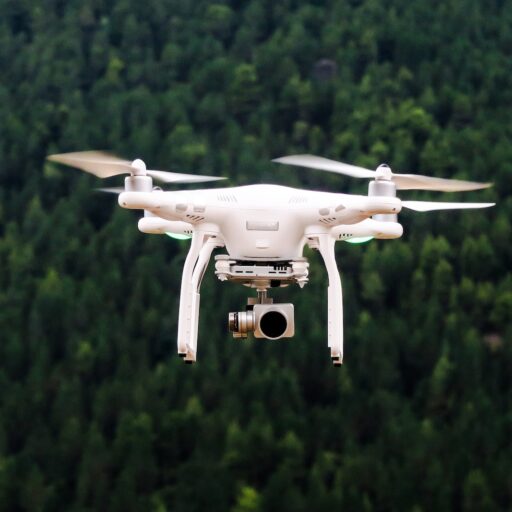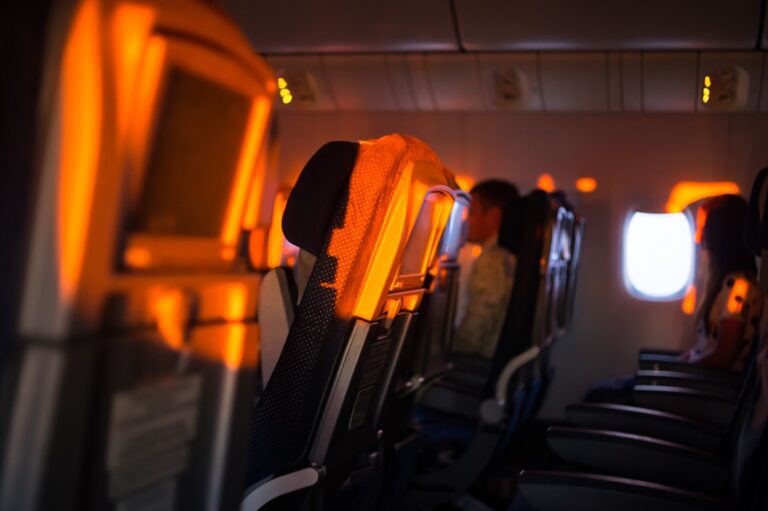Support our educational content for free when you purchase through links on our site. Learn more
What is the Name for Flying Drones? Discover 10 Fascinating Insights [2024] 🚀
Have you ever looked up at the sky and wondered what those buzzing machines are called? If you’re curious about the world of flying drones, you’re in for a treat! In this article, we’ll dive deep into the terminology surrounding drones, explore the various types, and uncover how they’re revolutionizing industries from agriculture to filmmaking. You might even be surprised to learn that the term “drone” encompasses a wide range of UAVs (Unmanned Aerial Vehicles) that serve diverse purposes.
Picture this: It’s a sunny Saturday afternoon, and you’re at the park with friends, flying your shiny new DJI Mini 2. Suddenly, a curious child runs up to you and asks, “What’s that flying thing called?” Instead of just saying “drone,” you realize there’s a whole universe of terminology and applications behind it. This article will not only answer that question but also equip you with the knowledge to impress your friends next time you’re out flying!
Key Takeaways
- Drones are also known as Unmanned Aerial Vehicles (UAVs) and can be used for a variety of applications.
- Different types of drones include consumer, professional, racing, and toy drones, each designed for specific uses.
- Understanding drone components such as the frame, motors, and flight controller is essential for making informed purchases.
- Safety regulations are crucial for flying drones legally and responsibly, especially for commercial use.
- The future of drones includes exciting advancements like autonomous flying and drone taxis.
Ready to take the plunge into the world of drones? 👉 Shop popular models like the DJI Mini 2 on Amazon or explore professional options like the DJI Mavic Air 2 on Walmart. Happy flying! 🛸
Table of Contents
- Quick Tips and Facts about Flying Drones
- What Exactly is a Flying Drone?
- The Evolution of Flying Drones: A Brief History
- Types of Flying Drones: Which One is Right for You?
- Key Components of a Flying Drone
- How Flying Drones Work: The Technology Behind the Magic
- Flying Drone Regulations: What You Need to Know
- Best Practices for Safe Flying Drone Operations
- Flying Drone Applications: Where Are They Used?
- Choosing the Right Drone for Your Needs
- Flying Drones for Fun vs. Professional Use: What’s the Difference?
- Future Trends in Flying Drones: What’s on the Horizon?
- Conclusion
- Recommended Links
- FAQ about Flying Drones
- Reference Links for Flying Drones
Quick Tips and Facts about Flying Drones
Welcome to the world of flying drones! Whether you’re a newbie or a seasoned pilot, these quick tips will get your propellers spinning:
- Drones, also known as Unmanned Aerial Vehicles (UAVs), are aircraft without a human pilot on board. They can be controlled remotely or fly autonomously using software-controlled flight plans.
- FAA Part 107 certification is a must if you’re planning to use drones commercially in the U.S. Learn more here.
- Always check local regulations before taking flight. Different countries have varying rules regarding drone operations.
- Battery life is key! Most consumer drones have a flight time of 20-30 minutes. Always carry spares if you’re on a long mission.
- Practice makes perfect. Start in open areas and gradually challenge yourself with more complex maneuvers.
For more insights on drone business opportunities, check out Drone Business Names Ideas.
What Exactly is a Flying Drone?
A flying drone, or UAV, is a marvel of modern technology. It’s essentially an aircraft without a human pilot, controlled either remotely or autonomously. The term “drone” covers a wide range of devices, from small consumer drones used for photography to large military drones used for reconnaissance.
The Anatomy of a Drone
- Frame: The skeleton of the drone. Typically made from lightweight materials like carbon fiber or plastic.
- Motors and Propellers: Provide the thrust needed for flight.
- Flight Controller: The brain of the drone, managing all onboard systems.
- GPS Module: Essential for navigation and maintaining stable flight.
- Camera and Gimbal: For capturing stunning aerial footage.
Why the Buzz?
Drones have become popular for their versatility. They’re used in photography, agriculture, surveillance, and even delivery services. And let’s not forget the sheer joy of flying!
The Evolution of Flying Drones: A Brief History

Did you know that drones have been around longer than you might think? The concept dates back to the early 20th century. Here’s a quick flight through history:
- 1917: The first pilotless aircraft, known as the “Kettering Bug,” was developed during World War I.
- 1940s: Drones were used for target practice and reconnaissance in World War II.
- 2000s: The rise of consumer drones began, thanks to advancements in technology and miniaturization.
- 2010s: Drones became a household name, with companies like DJI leading the charge in consumer drone technology.
For more on the evolution of drones, dive into our Drone Industry News.
Types of Flying Drones: Which One is Right for You?
Choosing the right drone is like picking a car. It depends on your needs and budget. Here’s a breakdown:
1. Consumer Drones 🛸
Perfect for hobbyists and beginners. Brands like DJI and Parrot dominate this space.
2. Professional Drones 📷
Used for commercial applications like filmmaking and surveying. Think DJI Inspire or Yuneec Typhoon.
3. Racing Drones 🚀
Designed for speed and agility. Popular in competitive drone racing circuits.
4. Toy Drones 🎮
Great for kids and indoor flying. Affordable and easy to use.
Specs Comparison
| Drone Type | Use Case | Popular Models |
|---|---|---|
| Consumer Drones | Photography, Hobby | DJI Mavic Air, Parrot Anafi |
| Professional Drones | Filmmaking, Surveying | DJI Inspire 2, Yuneec Typhoon H |
| Racing Drones | Competitive Racing | EMAX Tinyhawk, ARRIS X-Speed |
| Toy Drones | Indoor Flying, Kids | Ryze Tello, Holy Stone HS210 |
For more detailed guides, explore our Drone Brand Guides.
Key Components of a Flying Drone
Understanding the components of a drone can help you make informed decisions when buying or upgrading. Here’s what makes a drone tick:
Frame 🏗️
The frame is the backbone of a drone. It holds everything together. Most consumer drones have a quadcopter frame, which means they have four arms.
Motors and Propellers 🌀
These provide the lift and maneuverability. Brushless motors are common in drones due to their efficiency and durability.
Battery and Charger 🔋
Lithium-polymer (LiPo) batteries are standard. They offer a good balance of weight and power. Always use the recommended charger to avoid mishaps.
Camera and Gimbal 📸
For aerial photography, the camera quality is crucial. A gimbal stabilizes the camera, ensuring smooth footage even during fast maneuvers.
Flight Controller and GPS 🧠
The flight controller is the drone’s brain, while the GPS helps with navigation and stabilization.
For more on drone innovations, visit our Drone Innovations.
How Flying Drones Work: The Technology Behind the Magic
Ever wondered how drones defy gravity and zip around the sky? It’s all about technology and a little bit of magic.
Lift and Thrust
Drones fly by generating lift with their propellers, similar to how helicopters work. The flight controller adjusts the speed of each motor to control direction and stability.
Stabilization
Gyroscopes and accelerometers keep the drone level. This is crucial for smooth flight and stable footage.
Navigation
With GPS and onboard sensors, drones can hover in place, follow pre-set routes, and even return home with the push of a button.
Communication
Most drones use radio frequencies to communicate with the controller. Advanced models also use Wi-Fi or Bluetooth for enhanced connectivity.
Want to dive deeper? Check out our Beginner Drones for more insights.
Flying Drone Regulations: What You Need to Know
Flying a drone isn’t just about having fun. It’s also about following the rules. Here’s a quick rundown:
FAA Regulations in the U.S. 📜
- Part 107 Certification: Required for commercial drone operations.
- Registration: Drones over 0.55 pounds must be registered. Register here.
- Flight Restrictions: Fly below 400 feet, within visual line-of-sight, and away from restricted airspace.
International Regulations 🌍
Regulations vary by country. Always check local laws before flying. For instance, in the UK, drones over 250g require registration and a flyer ID.
For a comprehensive guide, visit Drone Industry News.
Best Practices for Safe Flying Drone Operations
Safety first, folks! Here are some best practices to ensure a safe and enjoyable flight:
- Pre-Flight Check: Inspect your drone, check battery levels, and ensure all components are secure.
- Weather Conditions: Avoid flying in high winds, rain, or fog.
- Maintain Line-of-Sight: Always keep your drone within view.
- Avoid Crowds: Never fly over people, especially in crowded areas.
- Respect Privacy: Be mindful of people’s privacy and avoid flying near private properties without permission.
For more safety tips, explore our Drone Brand Guides.
Flying Drone Applications: Where Are They Used?
Drones are more than just flying cameras. They’re revolutionizing industries! Here’s how:
Photography and Videography 📷
Capture breathtaking aerial shots and cinematic footage. Drones like the DJI Phantom 4 are popular among filmmakers.
Agriculture 🌾
Farmers use drones for crop monitoring, irrigation management, and pest control.
Search and Rescue 🚑
Drones provide aerial views in disaster zones, helping locate missing persons more efficiently.
Delivery Services 📦
Companies like Amazon are exploring drone delivery to speed up logistics.
Environmental Monitoring 🌍
Drones help track wildlife, monitor deforestation, and assess environmental damage.
For more on drone applications, check out Drone Business Opportunities.
Choosing the Right Drone for Your Needs
Selecting the perfect drone can be overwhelming. Here’s a guide to help you make the right choice:
Purpose
- Recreational: Look for user-friendly models with basic features.
- Professional: Opt for drones with high-quality cameras and advanced flight modes.
Camera Quality
If photography is your goal, prioritize drones with 4K cameras and gimbals for stabilization.
Flight Time
Consider drones with longer battery life if you’re planning extended flights.
Portability
For travelers, compact and foldable drones like the DJI Mavic Mini are ideal.
Pros and Cons
| Feature | Pros | Cons |
|---|---|---|
| Camera Quality | High-resolution images and videos | Can be expensive |
| Battery Life | Longer flight time | Heavier batteries |
| Portability | Easy to carry and travel with | May compromise on features |
| Flight Modes | Offers versatility and automation | Complexity may increase |
For personalized recommendations, visit our Drone Brand Guides.
Flying Drones for Fun vs. Professional Use: What’s the Difference?
Flying drones can be a hobby or a profession. Here’s how they differ:
Recreational Use 🎮
- Fun and Games: Ideal for capturing personal moments and exploring new perspectives.
- No License Required: But following basic safety guidelines is recommended.
Professional Use 💼
- Commercial Applications: Used in industries like real estate, agriculture, and filmmaking.
- Certification Needed: FAA Part 107 certification is required for commercial pilots.
User Experiences
- Recreational Pilot: “Flying my DJI Mini 2 is a weekend ritual. It’s amazing how it captures my adventures from above!”
- Professional Pilot: “As a real estate photographer, my DJI Inspire 2 has transformed my business. The aerial shots are a game-changer!”
For more on drone innovations, explore Drone Innovations.
Future Trends in Flying Drones: What’s on the Horizon?
The future of drones is as exciting as a sci-fi movie. Here’s what’s coming:
Autonomous Drones 🤖
Advancements in AI are paving the way for drones that can fly and make decisions without human intervention.
Drone Taxis 🚁
Companies like Uber are exploring aerial taxi services, promising to revolutionize urban transportation.
Swarm Technology 🐝
Imagine fleets of drones working together for complex tasks like search and rescue or agricultural monitoring.
Enhanced Connectivity 📡
With 5G technology, drones will have faster and more reliable communication, opening new possibilities.
For more industry insights, visit Drone Industry News.
Ready to take flight? Whether you’re capturing memories or revolutionizing industries, drones offer endless possibilities. Stay tuned for our conclusion, where we’ll tie it all together!
Conclusion

Flying drones are not just a passing trend; they are a fascinating blend of technology, creativity, and practicality. Whether you’re using a drone for photography, racing, or professional applications, understanding the ins and outs of these devices is crucial for maximizing your experience.
Summary of Positives and Negatives
Positives:
- Versatility: Drones serve multiple purposes across various industries, from agriculture to aerial photography.
- Accessibility: With models available for every skill level and budget, getting started is easier than ever.
- Technological Advancements: Features like GPS stabilization and high-quality cameras enhance user experience.
Negatives:
- Regulatory Challenges: Navigating local laws and regulations can be complex and sometimes restrictive.
- Battery Life: Most consumer drones have limited flight times, which can be a hindrance during extended shoots.
- Learning Curve: For beginners, mastering drone controls and flight techniques can take time.
Confident Recommendation
If you’re looking to dive into the world of flying drones, we highly recommend starting with models like the DJI Mini 2 for beginners or the DJI Mavic Air 2 for those seeking a professional edge. Both offer excellent performance, camera quality, and user-friendly interfaces.
So, are you ready to take your aerial adventures to new heights? 🛸
Recommended Links
- 👉 Shop DJI Mini 2 on: Amazon | Walmart | DJI Official Website
- 👉 Shop DJI Mavic Air 2 on: Amazon | Walmart | DJI Official Website
Books to Explore
FAQ

What are drone flyers called?
Drone pilots are the most common term used for individuals who operate drones. They may also be referred to as remote pilots, especially in a commercial context. This title emphasizes their ability to control the drone from a distance.
What is the professional name for drones?
The professional term for drones is Unmanned Aerial Vehicles (UAVs) or Unmanned Aerial Systems (UAS). This terminology is often used in regulatory contexts and highlights the technology’s capability to operate without a human pilot onboard.
Read more about “Discover the Top 25 UAS Companies You Need to Know in 2024! 🚀”
What is the technical term for a drone?
The technical term for a drone is UAV (Unmanned Aerial Vehicle). This term encompasses a wide range of drone types, including those used for military, commercial, and recreational purposes.
Read more about “Discover the 10 Leading Military Drone Companies Transforming Warfare in 2024! 🚀”
What is the correct name for a drone?
While “drone” is the most commonly used term, the correct name can vary based on context. In regulatory and technical discussions, UAV or UAS is often preferred. However, in casual conversation, “drone” is widely accepted and understood.
Read more about “Who Are the Top 25 Drone Producers? Discover the Leaders of 2024! 🚀”
What are the different types of drones?
Drones can be classified into several categories based on their use:
- Consumer Drones: For recreational use and photography.
- Professional Drones: Used in commercial applications like filmmaking and surveying.
- Racing Drones: Designed for speed and agility in competitive racing.
- Toy Drones: Smaller, simpler drones for kids or indoor fun.
How can I become a licensed drone pilot?
To become a licensed drone pilot, you must:
- Be at least 16 years old.
- Pass the FAA’s aeronautical knowledge test.
- Obtain a Remote Pilot Certificate from the FAA.
- Register your drone if it weighs over 0.55 pounds.
Read more about “The Drone Titans: 30 Companies Leading the Sky … 🏆”
Reference Links
- FAA Drone Regulations
- Texas A&M University Unmanned Aerial Systems
- HOsiHO Drone Network: What are drone pilots called
Now that you’re equipped with the knowledge about flying drones, it’s time to take to the skies! Happy flying! 🚀


